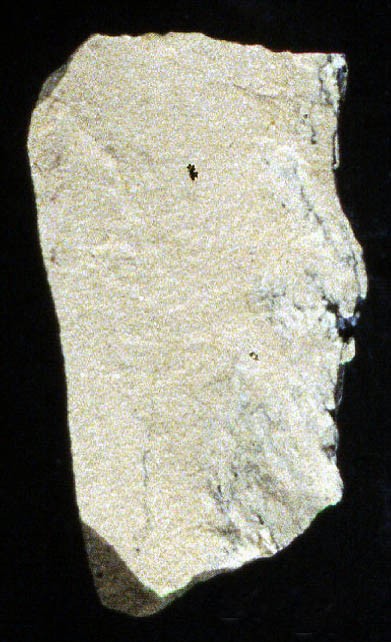Sarmientite
A valid IMA mineral species - grandfathered
This page is currently not sponsored. Click here to sponsor this page.
About Sarmientite
Formula:
Fe3+2(AsO4)(SO4)(OH) · 5H2O
Colour:
Light yellow-orange
Lustre:
Dull
Specific Gravity:
2.58
Crystal System:
Monoclinic
Member of:
Name:
Named in honor of Domingo Faustino Sarmiento (15 February 1811, San Juan, Argentina - 11 September 1888, Asunción, Paraguay), educator, writer, and the seventh President of Argentina. He was a founder of the Cordoba Academy of Science.
Sanjuanite-Destinezite Group. Arsenate analogue of Diadochite.
An uncommon secondary mineral occurring in oxidized pyritic veins in diabase.
An uncommon secondary mineral occurring in oxidized pyritic veins in diabase.
Unique Identifiers
Mindat ID:
3536
Long-form identifier:
mindat:1:1:3536:7
GUID
(UUID V4):
(UUID V4):
13bf2c0f-77b0-4e87-9b65-382771b9e2f0
IMA Classification of Sarmientite
Approved, 'Grandfathered' (first described prior to 1959)
First published:
1941
Classification of Sarmientite
8.DB.35
8 : PHOSPHATES, ARSENATES, VANADATES
D : Phosphates, etc. with additional anions, with H2O
B : With only medium-sized cations, (OH, etc.):RO4< 1:1
8 : PHOSPHATES, ARSENATES, VANADATES
D : Phosphates, etc. with additional anions, with H2O
B : With only medium-sized cations, (OH, etc.):RO4< 1:1
43.5.1.1
43 : COMPOUND PHOSPHATES, ETC.
5 : Hydrated Compound Phosphates, etc·, Containing Hydroxyl or Halogen
43 : COMPOUND PHOSPHATES, ETC.
5 : Hydrated Compound Phosphates, etc·, Containing Hydroxyl or Halogen
22.3.26
22 : Phosphates, Arsenates or Vanadates with other Anions
3 : Phosphates, arsenates or vanadates with sulphates
22 : Phosphates, Arsenates or Vanadates with other Anions
3 : Phosphates, arsenates or vanadates with sulphates
Mineral Symbols
As of 2021 there are now IMA–CNMNC approved mineral symbols (abbreviations) for each mineral species, useful for tables and diagrams.
| Symbol | Source | Reference |
|---|---|---|
| Smi | IMA–CNMNC | Warr, L.N. (2021). IMA–CNMNC approved mineral symbols. Mineralogical Magazine, 85(3), 291-320. doi:10.1180/mgm.2021.43 |
Physical Properties of Sarmientite
Dull
Transparency:
Translucent
Colour:
Light yellow-orange
Density:
2.58 g/cm3 (Measured) 2.58 g/cm3 (Calculated)
Optical Data of Sarmientite
Type:
Biaxial (+)
RI values:
nα = 1.628 nβ = 1.635 nγ = 1.698
2V:
Measured: 38° , Calculated: 38°
Max Birefringence:
δ = 0.070

Image shows birefringence interference colour range (at 30µm thickness)
and does not take into account mineral colouration.
and does not take into account mineral colouration.
Surface Relief:
Moderate
Dispersion:
weak to distinct
Chemistry of Sarmientite
Mindat Formula:
Fe3+2(AsO4)(SO4)(OH) · 5H2O
Crystallography of Sarmientite
Crystal System:
Monoclinic
Class (H-M):
2/m - Prismatic
Space Group:
P21/b
Setting:
P21/c
Cell Parameters:
a = 6.55 Å, b = 18.55 Å, c = 9.70 Å
β = 97.65°
β = 97.65°
Ratio:
a:b:c = 0.353 : 1 : 0.523
Unit Cell V:
1,168.08 ų (Calculated from Unit Cell)
Z:
4
Morphology:
Crystals prismatic [001] and flattened {010}, exhibiting {010}, {110} and {011}. Microcrystalline (to 20 μm) forming nodular masses as aggregates.
Crystal Structure
Load
Unit Cell | Unit Cell Packed
2x2x2 | 3x3x3 | 4x4x4
Unit Cell | Unit Cell Packed
2x2x2 | 3x3x3 | 4x4x4
Show
Big Balls | Small Balls | Just Balls | Spacefill
Polyhedra Off | Si Polyhedra | All Polyhedra
Remove metal-metal sticks
Big Balls | Small Balls | Just Balls | Spacefill
Polyhedra Off | Si Polyhedra | All Polyhedra
Remove metal-metal sticks
Display Options
Black Background | White Background
Perspective On | Perspective Off
2D | Stereo | Red-Blue | Red-Cyan
Black Background | White Background
Perspective On | Perspective Off
2D | Stereo | Red-Blue | Red-Cyan
View
CIF File Best | x | y | z | a | b | c
CIF File Best | x | y | z | a | b | c
Rotation
Stop | Start
Stop | Start
Labels
Console Off | On | Grey | Yellow
Console Off | On | Grey | Yellow
Data courtesy of the American Mineralogist Crystal Structure Database. Click on an AMCSD ID to view structure
| ID | Species | Reference | Link | Year | Locality | Pressure (GPa) | Temp (K) |
|---|---|---|---|---|---|---|---|
| 0020437 | Sarmientite | Colombo F, Rius J, Vallcorba O, Pannunzio Miner E V (2014) The crystal structure of sarmientite, Fe3+2(AsO4)(SO4)(OH)*5H2O, solved ab initio from laboratory powder diffraction data Mineralogical Magazine 78 347-360 | 2014 | Santa Elena mine, San Juan Province, Argentina | 0 | 293 |
CIF Raw Data - click here to close
X-Ray Powder Diffraction
Powder Diffraction Data:
| d-spacing | Intensity |
|---|---|
| 9.29 Å | (100) |
| 4.87 Å | (38) |
| 4.64 Å | (90) |
| 4.26 Å | (80) |
| 3.43 Å | (40) |
| 3.06 Å | (70) |
| 2.60 Å | (48) |
Geological Environment
Paragenetic Mode(s):
| Paragenetic Mode | Earliest Age (Ga) |
|---|---|
| Stage 7: Great Oxidation Event | <2.4 |
| 47a : [Near-surface hydration of prior minerals] | |
| 47b : [Sulfates and sulfites] | |
| 47d : [Arsenates, antimonates, selenates, bismuthinates] |
Type Occurrence of Sarmientite
General Appearance of Type Material:
Pure, irregular nodules made up of minute prismatic crystals to 25 microns in length.
Place of Conservation of Type Material:
The Academy of Natural Sciences of Philadelphia?
Geological Setting of Type Material:
Fe-sulfate gossan over pyrite vein.
Associated Minerals at Type Locality:
Reference:
Angelelli, V., Gordon, S.G. (1941) Sarmientite, a new mineral from Argentina. Notulae Naturae of The Academy of Natural Sciences of Philadelphia: 92: 1-4.
Other Language Names for Sarmientite
German:Sarmientit
Spanish:Sarmientita
Relationship of Sarmientite to other Species
Member of:
Other Members of this group:
| Destinezite | Fe3+2(PO4)(SO4)(OH) · 6H2O | Tric. 1 : P1 |
| Sanjuanite | Al2(PO4)(SO4)(OH) · 9H2O | Tric. |
| Zýkaite | Fe3+4(AsO4)3(SO4)(OH) · 15H2O | Orth. 2 2 2 : P2 2 2 |
Common Associates
Associated Minerals Based on Photo Data:
| 1 photo of Sarmientite associated with Hilarionite | Fe3+2(SO4)(AsO4)(OH) · 6H2O |
Related Minerals - Strunz-mindat Grouping
| 8.DB. | Arangasite | Al2F(PO4)(SO4) · 9H2O |
| 8.DB. | Camaronesite | [Fe3+(H2O)2(PO3OH)]2(SO4) · 1-2H2O |
| 8.DB. | Höslite | Fe3+3(VO4)2(SO4)(OH)(H2O)4 · 3H2O |
| 8.DB.05 | Diadochite | Fe3+2(PO4)(SO4)(OH) · 6H2O |
| 8.DB.05 | Pitticite | (Fe, AsO4, H2O) (?) |
| 8.DB.05 | Destinezite | Fe3+2(PO4)(SO4)(OH) · 6H2O |
| 8.DB.07 | Wilhelmgümbelite | ZnFe2+Fe3+3(PO4)3(OH)4(H2O)5 · 2H2O |
| 8.DB.07 | Schmidite | [Zn2(Fe3+,Mn2+)2Fe3+(PO4)3(OH)3(H2O)6] · 2H2O |
| 8.DB.07 | Wildenauerite | Zn(Fe3+,Mn2+)2MnFe3+(PO4)3(OH)3(H2O)6 · 2H2O |
| 8.DB.10 | Vashegyite | Al11(PO4)9(OH)6 · 38H2O |
| 8.DB.15 | Schoonerite | ZnMn2+Fe2+2Fe3+(PO4)3(OH)2 · 9H2O |
| 8.DB.20 | Sinkankasite | Mn2+Al(PO3OH)2(OH) · 6H2O |
| 8.DB.25 | Mitryaevaite | Al6(PO4)((P,S)O3(OH,O))2F2(OH)2 · 14.5H2O |
| 8.DB.30 | Sanjuanite | Al2(PO4)(SO4)(OH) · 9H2O |
| 8.DB.40 | Bukovskýite | Fe3+2(AsO4)(SO4)(OH) · 9H2O |
| 8.DB.40 | Flurlite | Zn3Mn2+Fe3+(PO4)3(OH)2 · 9H2O |
| 8.DB.40 | Manganflurlite | ZnMn2+3Fe3+(PO4)3(OH)2(H2O)7 · 2H2O |
| 8.DB.42 | Bohuslavite | Fe3+4(PO4)3(SO4)(OH) · nH2O |
| 8.DB.45 | Zýkaite | Fe3+4(AsO4)3(SO4)(OH) · 15H2O |
| 8.DB.47 | Lapeyreite | Cu3O[AsO3(OH)]2 · 0.75H2O |
| 8.DB.50 | Giniite | Fe2+Fe3+4(PO4)3(OH)5 · 2H2O |
| 8.DB.50 | Rossiantonite | Al3(PO4)(SO4)2(OH)2(H2O)14 |
| 8.DB.52 | Arctowskite | Al9(PO4)8(OH)3 · 27H2O |
| 8.DB.55 | Sasaite | (Al,Fe3+)14(PO4)11(SO4)(OH)7 · 83H2O |
| 8.DB.60 | Mcauslanite | Fe3Al2(PO4)3(PO3OH)F · 18H2O |
| 8.DB.65 | Goldquarryite | CuCd2Al3(PO4)4F2(H2O,F)2 · 10H2O |
| 8.DB.70 | Birchite | Cd2Cu2(PO4)2(SO4) · 5H2O |
| 8.DB.75 | Braithwaiteite | NaCu5(Ti4+Sb5+)(AsO4)4(HAsO4)2O2 · 8H2O |
Other Information
Health Risks:
No information on health risks for this material has been entered into the database. You should always treat mineral specimens with care.
Internet Links for Sarmientite
mindat.org URL:
https://www.mindat.org/min-3536.html
Please feel free to link to this page.
Please feel free to link to this page.
Search Engines:
External Links:
Mineral Dealers:
References for Sarmientite
Reference List:
Localities for Sarmientite
Locality List
 - This locality has map coordinates listed.
- This locality has map coordinates listed.
 - This locality has estimated coordinates.
ⓘ - Click for references and further information on this occurrence.
? - Indicates mineral may be doubtful at this locality.
- This locality has estimated coordinates.
ⓘ - Click for references and further information on this occurrence.
? - Indicates mineral may be doubtful at this locality.
 - Good crystals or important locality for species.
- Good crystals or important locality for species.
 - World class for species or very significant.
(TL) - Type Locality for a valid mineral species.
(FRL) - First Recorded Locality for everything else (eg varieties).
- World class for species or very significant.
(TL) - Type Locality for a valid mineral species.
(FRL) - First Recorded Locality for everything else (eg varieties).
All localities listed without proper references should be considered as questionable.
Argentina (TL) | |
| |
Greece | |
| |
| |
Morocco | |
| |
South Africa | |
| |
USA | |
| |
| |
|
Quick NavTopAbout SarmientiteUnique IdentifiersIMA Classification Classification Mineral SymbolsPhysical Properties Optical Data Chemistry Crystallography Crystal StructureX-Ray Powder DiffractionGeological EnvironmentType Occurrence Other LanguagesRelationshipsCommon AssociatesStrunz-MindatOther InformationInternet Links References Localities Locality List



 symbol to view information about a locality.
The
symbol to view information about a locality.
The 



Hilarion Mine, Kamariza Mines, Agios Konstantinos, Lavrion Mining District, Lavreotiki, East Attica, Attica, Greece